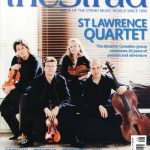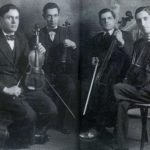The Strad magazine, April 2010 issue: In focus: Celeste Farotti
Copyright © 2010 Alberto Giordano – The Strad magazine. All rights reserved
MAKER
Celeste Farotti came from humble origins: he was born in 1864 to a farming family in a small Piedmont village near Casale Monferrato. After working as a carpenter, Farotti turned to violin making quite late: it was only around 1895 that he started making his first violins as an amateur, self-taught luthier. In 1898 the violinist Giuseppe Negri encouraged him to move to Milan in order to concentrate wholly on violin making. There, Farotti may have worked for a short time in the workshop of Leandro Bisiach, and it is documented that he soon opened his own workshop and that he worked independently, making and selling bowed instruments.
Farotti’s talents on both sides of the violin business quickly gained him a solid reputation, and as a result he won a number of gold medals in national and international competitions, for example in Milan in 1909, San Francisco in 1915, and Rome in 1917. Farotti trained both his brother Salvatore, who joined him in Milan around 1906, and the Italian–American luthier Alfredo Lanini. He stopped work in 1925 due to ill health and died in 1928.
STYLE
It’s remarkable how a carpenter and self-taught violin maker from a country village so quickly gained such a detailed knowledge of classic Italian instruments. This insight also allowed Farotti to become an accomplished maker of antiqued copies. Besides producing new violins that show the influence of the Piedmont and Lombardy school, Farotti made a number of copies that reveal great skill and intuition. He mainly made instruments based on Giuseppe Rocca and Giovanni Francesco Pressenda (makers from Farotti’s native region), but he also produced copies of Guadagnini, Pietro Guarneri, the Milanese makers of the 18th century and many others. In some cases, Farotti’s copies appear only slightly antiqued, while others are more fully worked to appear old and authentic. In order to achieve the best results, he used old wood not only for the plates but also for the blocks, even sometimes using old violin parts (for instance scrolls) recut for the purpose.
HISTORY
Made during Farotti’s best period, this cello bears an original label signed by the maker that indicates a construction date of 1913.
CRAFTSMANSHIP
Inspired by classical models, this cello’s ribs, scroll and one-piece back are made from a single piece of fine poplar cut half on the slab, the same piece used by Farotti in other cellos. Its belly is made from four pieces of old spruce. The interior shows spruce blocks and linings simply set in the corner blocks; the workmanship is fast and secure, with gauge tracks and scraper marks visible at many points. The front arching is quite low and gently connected to the borders, while the back appears rounder and higher. Purfling is set close to the edges, the long corners have no extensions and the scoop is light and elegant.
The scroll seems to recall Farotti’s Piedmont origins in its confident cut and its black-painted chamfer.
The varnish is laid over an intense ground, and its age and the natural wear give the cello a classical charm.
- Back length: 754mm
- Upper bouts: 358mm
- Lower bouts: 442mm
- Stop length: 405mm
The Strad, april 2010





